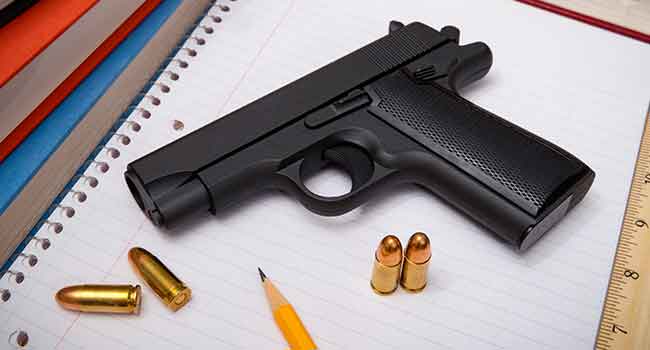
Massachusetts High School Installs Gunshot Detection System
Brockton High School in Brockton, Mass., has installed a gunshot detection system. The system is designed to give administrators and law enforcement a nearly-instant notification of the gunshot and its location.
- By Jessica Davis
- June 26, 2019
Brockton High School in Brockton, Mass., has installed a gunshot detection system. The system is designed to give administrators and law enforcement a nearly-instant notification of the gunshot and its location.
A Brockton police officer fired a handgun in a small auditorium at the school during a Monday afternoon demonstration of the gunshot detection system’s abilities. Enterprise News reports that an alarm sounded throughout the school about five seconds later, a computerized voice that said “Active Shooter in Little Theater.” Police and administrators’ cellphones also went off with alerts about the gunshot.
The gunshot detection system, made by EAGL Technology, can cost $25,000 or more to install in a building, with sensors priced at $1,200 each.
Jennifer Russell, a vice president with EAGL, said the system alerts police of an active shooter in less time than it would take to call 911 and explain the situation. Russell said the system can save time—which can mean saving lives—in a school shooting incident.
“The idea is to take that out of human hands,” said Richard Cogliano, director of business development for CIT Integrated Technologies Inc., the local company that sells and installs the systems on the East Coast.
Cogliano said that if someone began firing a gun in a school, people would most likely focus on starting a lockdown and securing students before calling 911. If the caller is panicked, it might be unclear for the dispatcher as to what is happening.
Deputy Superintendent Michael Thomas said the city received the gunshot detection system for free because Cogliano is a Brockton High graduate and the company had been looking for a school on the East Coast where they could test the sensors. The city won’t have to pay annual subscription fees for at least three years, he said.
There are several sensors installed throughout the high school, including in the cafeterias, lobbies, gyms, auditorium and the Little Theater. The sensors, which are ceiling-mounted, run on batteries and can detect shots within a 100-foot radius.
Police Lt. Frank Vardaro, head of the school’s police, said every police officer in the city would be notified if the alarm sounded, as city officers could help respond if they happened to be close by. According to Vardaro, if the alarm went off, police would enter under the assumption that there was an active shooter, as opposed to a person attempting suicide or someone taking hostages.
Thomas said he was excited to try the system as Brockton works to stay ahead of the curve in terms of school security.
“This is just another tool in the toolbox we could use,” Thomas said. “But you hope you never have to use it.”
About the Author
Jessica Davis is the Associate Content Editor for 1105 Media.